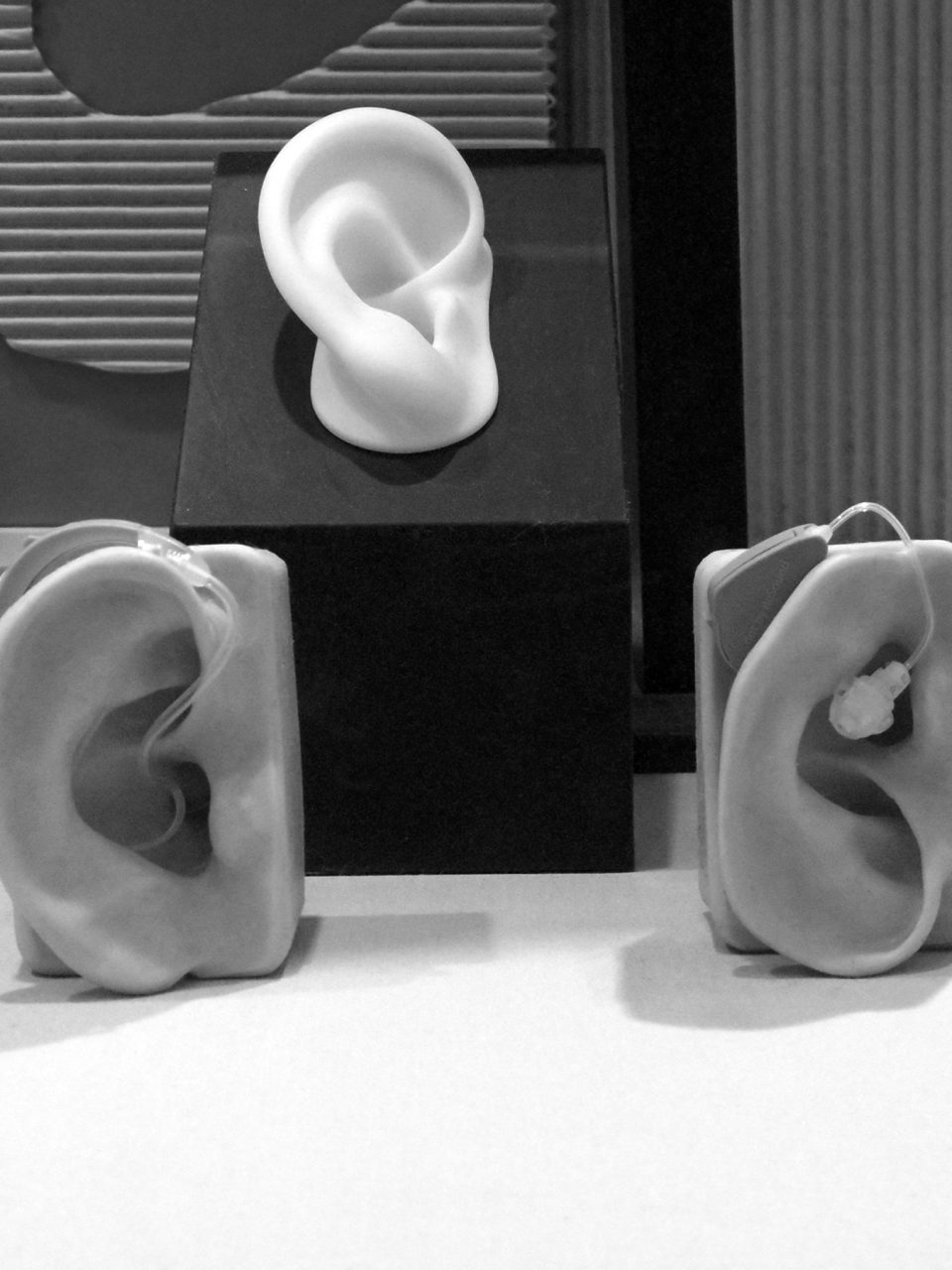The Third Ear
In 2016 I went into psychoanalysis to understand from the Lacanian perspective how we listen to ourselves and to the Other. Lacanians suggest an alternative mode of listening directed at the deeper layer of the unconscious. This mode of listening invites the individual in therapy to engage in a process of coming to know his or her own unconscious in its singularity. In listening, we become. We share the experience of being listening. The analyst as listener is not a master.
In the last session I propose to my psychoanalyst to stay quiet for a while, in silence in the room, both together and listen. I recorded this moment and also the previous moment in the waiting room. To listen is to wait, to be suspended for as long as possible in the virtuality of the analytic relation. The third ear can hear voices from within the self that are otherwise not audible because they are drowned out by the noise of our conscious thought-processes. Two raw recordings, not modified, not mastered, just recordings of waiting and listening moments in a lacanian psychoanalysis session. Two tracks with 8 minutes and 28 seconds published as three copies of red mini-cds (2016).
To play the media you will need to either update your browser to a recent version or update your Flash plugin.
To play the media you will need to either update your browser to a recent version or update your Flash plugin.
Exhibited as part of archive of the confusion.

FRAMEWORK
“Ex nihilo nihil fit” – Parmenides of Elea
The essence of psychoanalytic understanding is the third ear. The third ear is the unconscious capacity to decipher the psychological clues that inspire psychoanalytic conjectures. The clue is inked to unpleasant psychodynamic material that has been repressed and thereby placed in what Reik calls “a zone of silence” in the dynamic unconscious. Reik claims that the third ear decodes clues through an indirect process of understanding necessitated by the fact that we cannot directly know ourselves or others.
What the sensitive therapist hears is the musical rhythm of the patient’s discourse. When the therapist lets go of preconceived, systematic ideas, on the other hand, the “emotional undertones” of the patient’s associations “become clearly audible and distinct as if amplified by a microphone” and the patient’s singular personality emerges. It is telling that Theodor Reik borrowed the term “the third ear” from a passage in Nietzsche’s “Beyond Good and Evil” that discusses the ability to appreciate the musicality of language.
Being silent, dynamically unconscious material is “concealed” by the patient’s speech, but “revealed” by her silences. “The (patient) speaks or is silent, and accompanies his speech or silence with ‘speaking’ gestures. We see the play of his features, the variety of his movements”. Essentially, Reik is claiming that the unconscious has a built-in system designed to intuit the other’s unconscious by decoding interpersonal signals. It is this system which Reik calls the third ear. The therapist’s subjectivity is therefore not so much an impediment to listening as it is the “root” of psychoanalytic listening itself. Psychoanalytic listening is unconscious. The ability to listen with the third ear “is not teachable”. Otherwise, Listening with the third ear should be exclusively of scientific interest and have no practical relevance.
